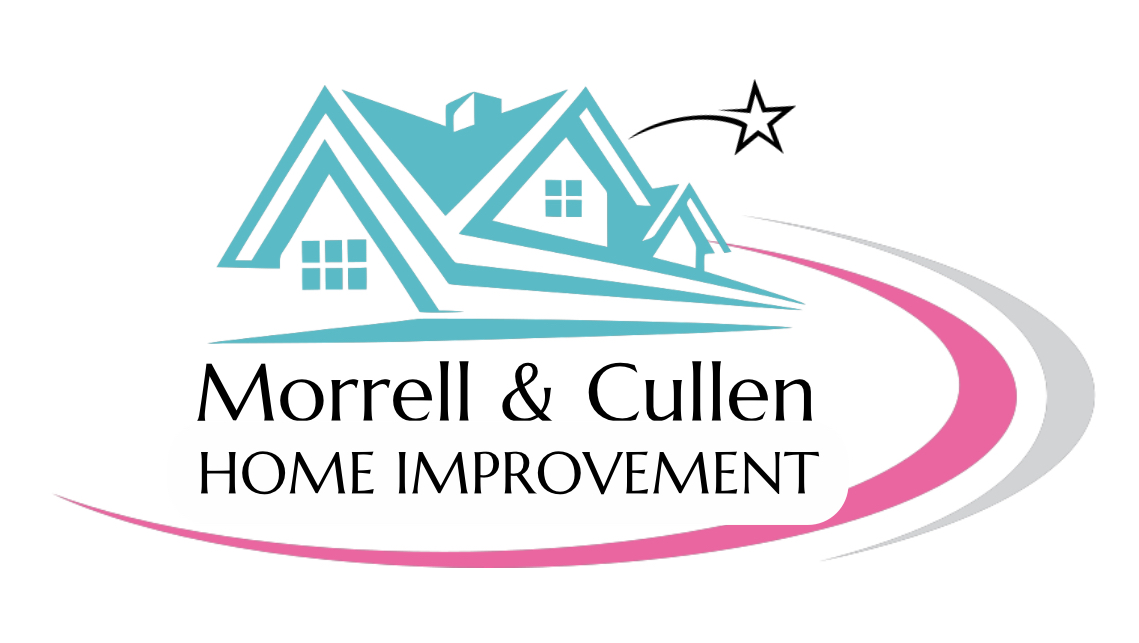Understanding Siding Profile Names
In siding, the profile refers to the cross-sectional shape or design that’s emulated by a piece of siding. It’s responsible for giving siding it’s unique look and feel, and can significantly impact a home's overall appearance. A siding’s profile can be the difference of whether a house appears bold, expansive and grounded versus tall, sleek and refined. And while the choice ultimately comes down to personal taste - it's also about proportion and balance. By carefully selecting the right profile, homeowners can influence the overall impression of their home and ensure it fits their unique vision.
Understanding Profile Names
Horizontal vinyl siding is available in a number of different profile options; each varying in width, depth, contrast and exposure.
In horizontal siding, the profile name is determined by the two following factors:
• the numbers of courses (or rows) per panel, and
• the width (or height) of each individual course
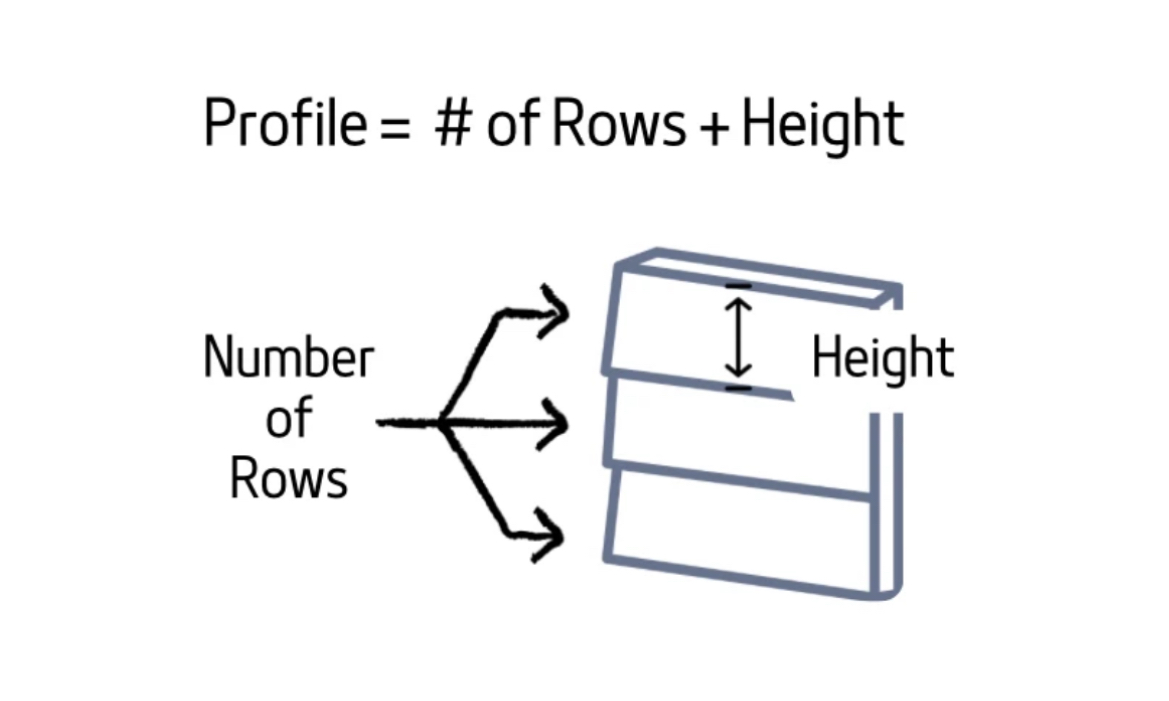
The Number of Courses Per Panel
Most horizontal vinyl siding (such as clapboard and dutch-lap) is produced in single-, double- and triple-course siding panels:
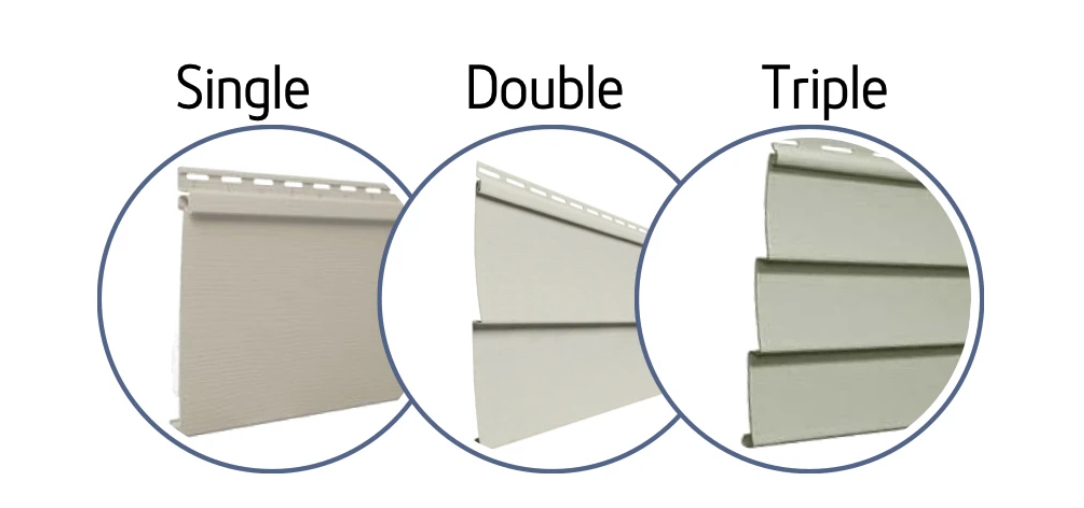
Single-course vinyl siding is manufactured to emulate the appearance of a single piece of clapboard. It provides a smooth, flat finish with edging that spans the full-width of the panel. It's generally considered to be the least expensive of the three options and is commonly used in budget-friendly homes.
Double- and triple- course vinyl siding is manufactured to emulate the appearance of multiple, overlapping rows of clapboard; with edging that's all equal in width. Double-course vinyl siding consists of 2 ridges/rows per panel and has a bit more texture than single-course vinyl siding, making it a good middle-ground option for those seeking an attractive yet affordable cladding-solution for their homes.
Double-course vinyl siding is generally considered to be the standard for use in residential homes, unless specified otherwise by homeowners.
Triple-course vinyl siding consists of 3 rows/ridges per panel and is the most textured of the three siding options. In turn, it's typically also the most expensive.
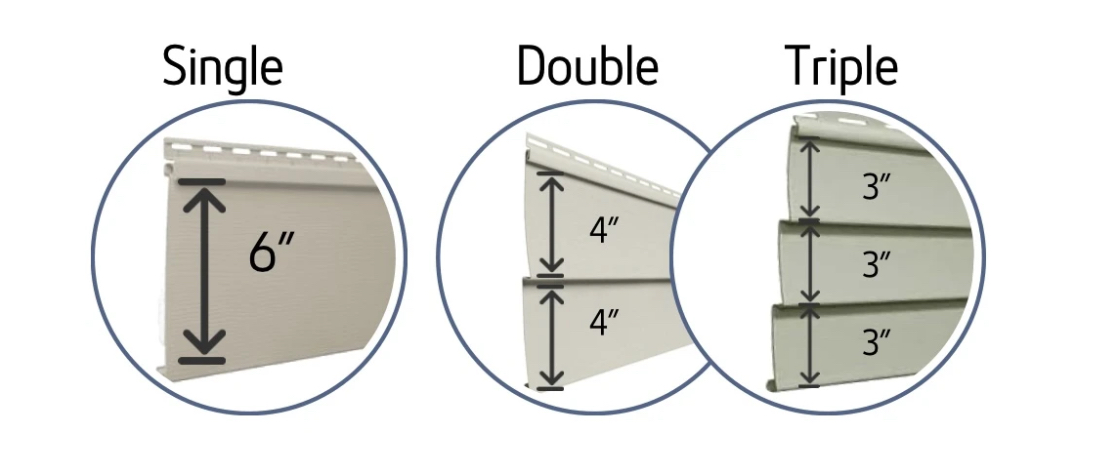
The Width of the Courses
Horizontal vinyl siding is most commonly offered in 4", 5", 6" and 7" widths (with 4" as the typical standard-width for use in residential buildings). The width refers to the height of each individual course/row:
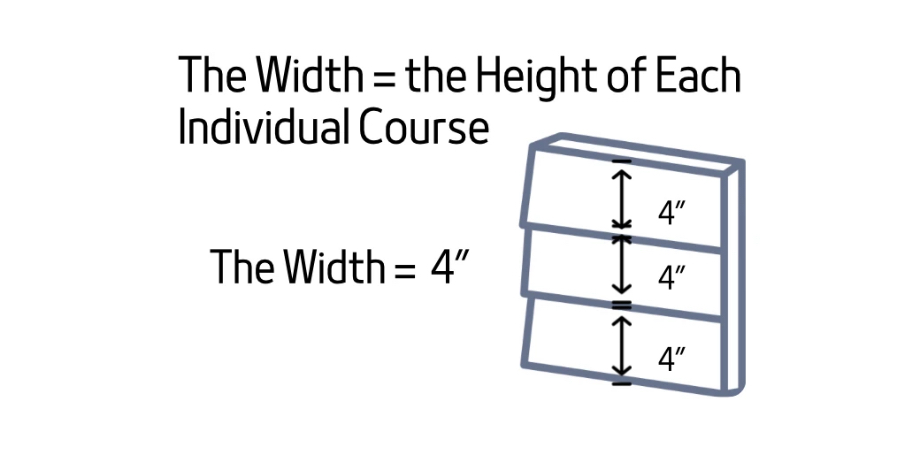
Some common width sizes for horizontal vinyl siding are as follows:
• Single-Course Siding: 6", 7", 8"
• Double-Course Siding: 3", 4", 4.5", 5", 6"
• Triple-Course Siding: 3", 4"
Understanding the Profile Names
As mentioned above, the profile names (in horizontal siding) are a combination of the number of courses that exist per panel of siding followed by the width (or height) of the individual courses or rows of clapboard.
For example, double 4" vinyl siding (often marketed as D4) refers to horizontal vinyl siding that has two 4" wide courses per individual panel of siding (as seen below in figure a). Whereas, triple 3" vinyl siding (often marketed as T3) consists of three 3" wide courses per panel of siding (as seen below in figure b).
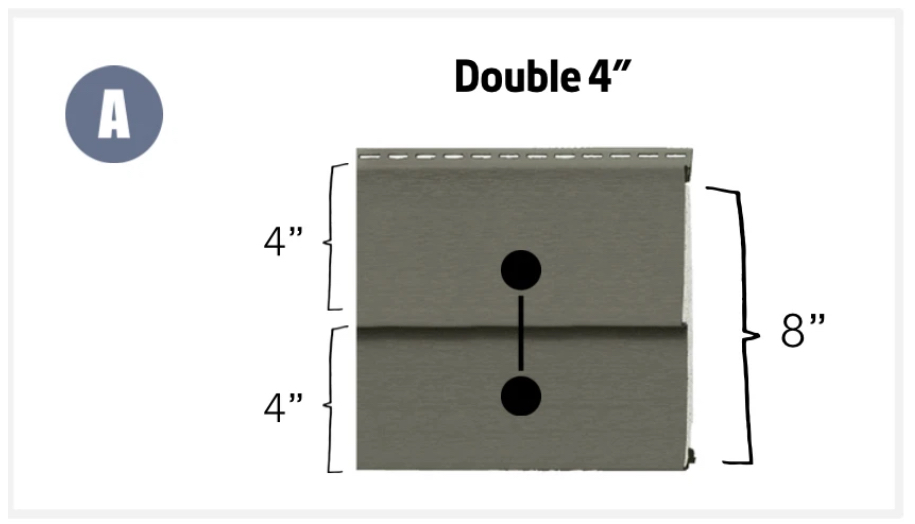
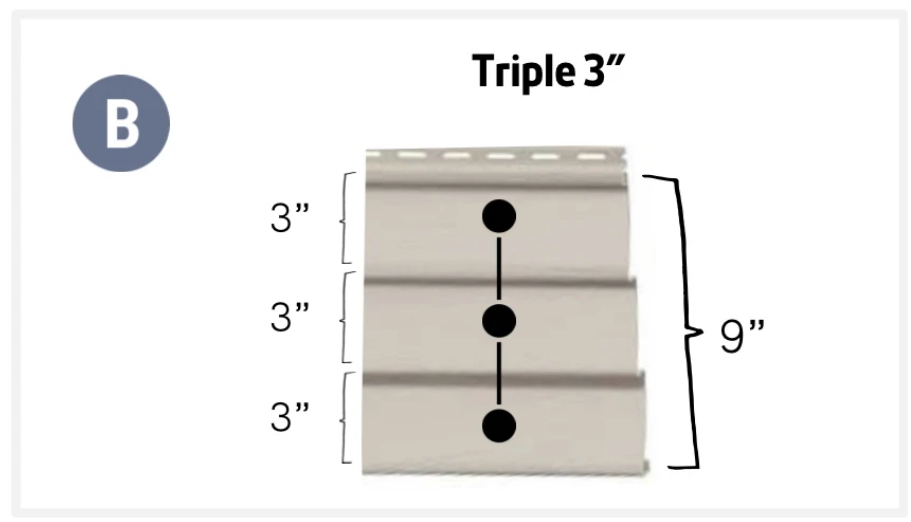
Double 4" vinyl siding (often referred to as "double-clap") is the most commonly used profile option and is considered standard for most residential buildings. Unless requested otherwise, it is typically what is used by default.
How Profile Impacts Appearance
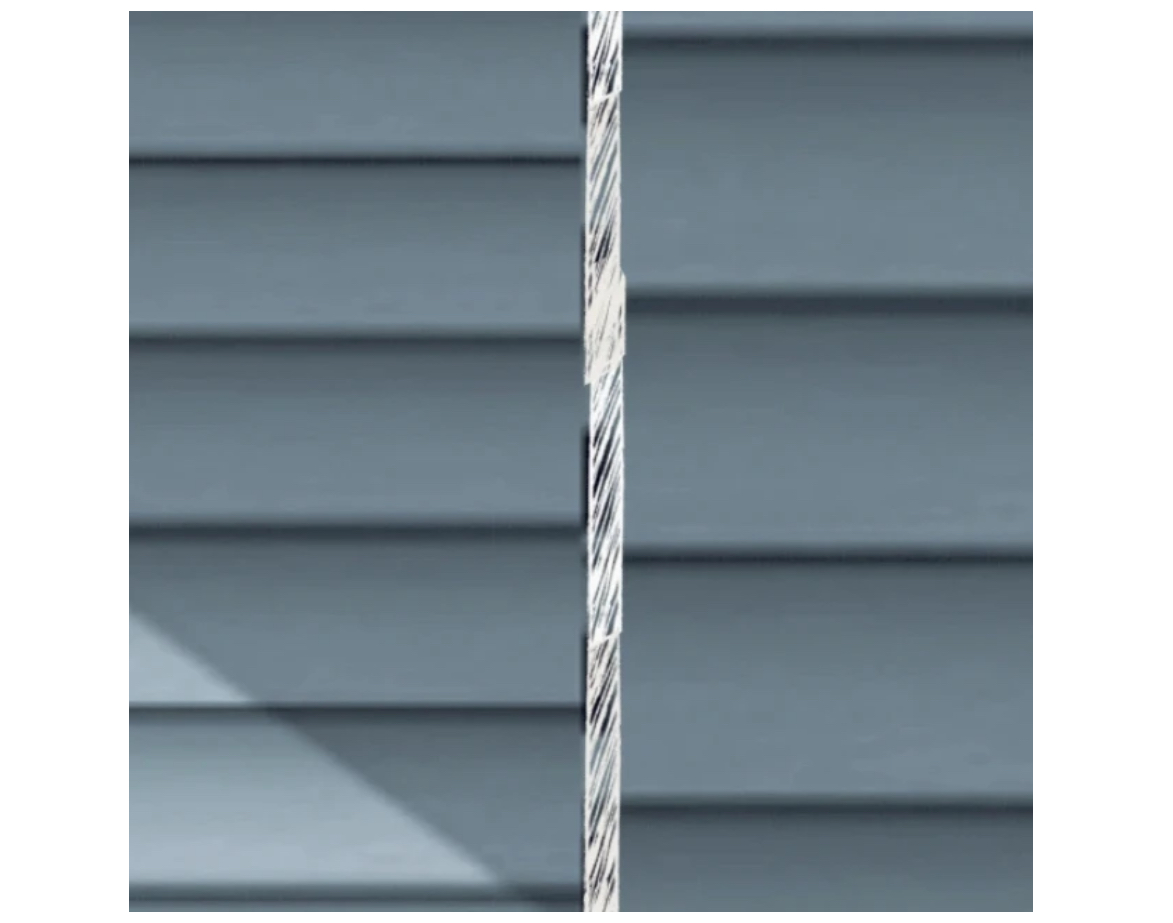
Wide Face Exposure (5” or more)
On smaller homes, wider courses can sometimes make the structure appear larger by scale, but in other cases may cause the exterior to feel more compressed or "huddled." On larger, contemporary-styled homes, however, wide exposure typically works well—creating bold, broad lines that complement the scale of the architecture.
Narrow Face Exposure
Narrower courses often add a sleek, modern feel to homes with smaller footprints, such as cottages, ranches, or Cape-Cod style houses. On large homes and commercial buildings, though, too many narrow courses can create excessive lines, leaving the exterior looking overly detailed or visually busy.
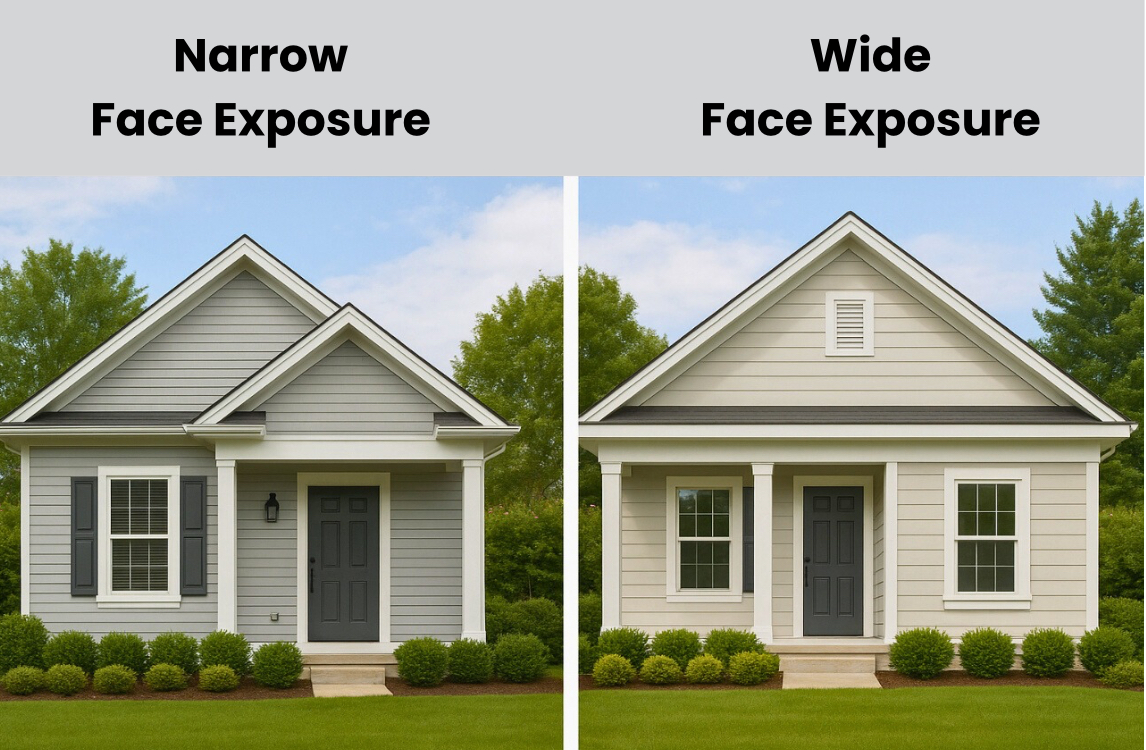
The profile of the vinyl siding that you choose ultimately depends on personal preference, your home's architectural style and your budget. Need help deciding? We're here to walk you through the options and ensure the process is easy and stress-free, as it should be.
Have questions relating to this or any other topic? We have answers!
Call us today at 📞 (413) 842-5303
